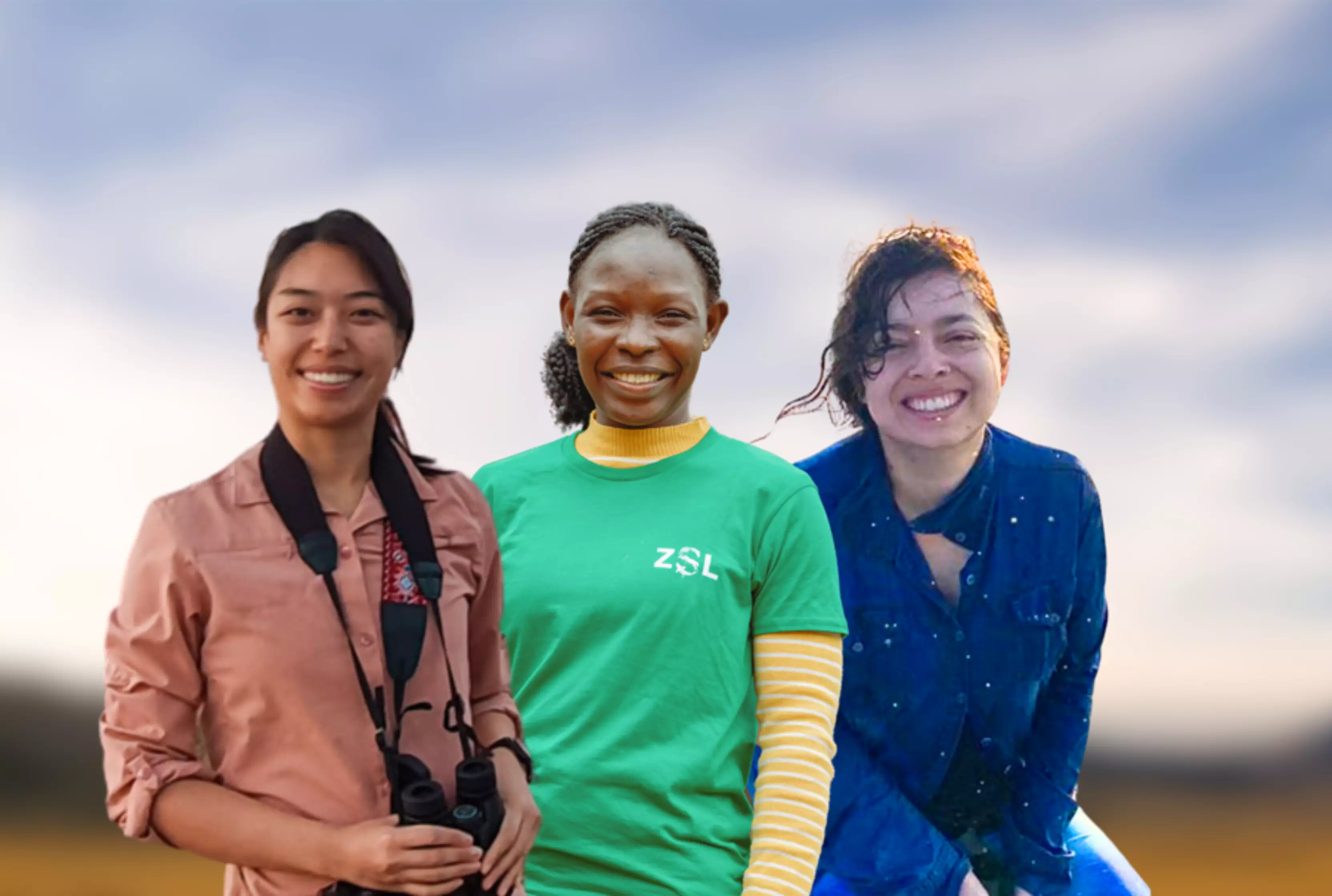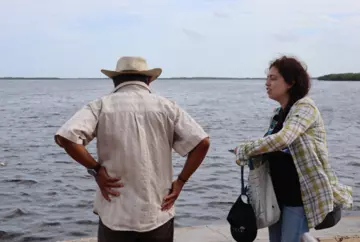
At ZSL, we know that real conservation happens when science and communities work together. Across the globe, our conservationists and scientists are partnering with local people to drive impact for wildlife and habitats.
In this feature, we highlight three of our conservationists and scientists—Ilse, Lea, and Heidi—who are leading community-driven conservation efforts. They share their experiences on working with local people, bridging the gap between science and traditional knowledge, and overcoming conservation challenges.
How do you involve local communities in conservation?
"A lot of what we call data gaps—like migration patterns, breeding seasons, and species distribution—are well-known to local people. We just haven’t asked." (Ilse Martínez, EDGE Fellow, Mexico)

For Ilse, one moment that defined her approach to conservation happened while interviewing a fisher in Mexico.
"One day as I was speaking to an elder fisher, his granddaughter—who was about six or seven—came to see what we were doing. He sat her on his knee, grabbed the pictures we were using, and started teaching her about sharks. I realized I was witnessing something special—how decades of knowledge were being passed down. That moment changed how I see conservation."
By learning from local fishers, Ilse isn’t just filling scientific data gaps—she’s also helping to ensure conservation knowledge is passed to future generations.
"The myth that protecting the environment always means sacrificing local human interests isn’t true. Often, there are win-win solutions if we take the time to listen." (Lea Moura, Community Engagement Support Officer, Cameroon)

Lea works directly with Indigenous Peoples and Local Communities (IPLCs) to support conservation efforts that benefit both wildlife and people. One of her most memorable moments came when a woman in her program refused to let challenges stop her from protecting her livelihood.
"One woman in our program didn’t have the resources to keep her poultry incubator running. Instead of giving up, she built her own artisanal incubator and diversified her farm with geese, turkeys, and ducks. For me, this is the perfect example of how small steps—supported by open dialogue and a strong will—can lead to lasting change in a community."
By empowering people with alternative livelihoods, Lea helps ensure that conservation isn’t just a short-term solution, but a sustainable way of life.
"Getting different stakeholders on the same page regarding the scientific evidence available (or missing) and the priority conservation actions needed is both challenging and rewarding when achieved." (Dr. Heidi Ma, Postdoctoral Researcher, ZSL Institute of Zoology)
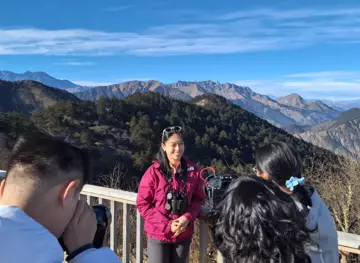
Through her work in China, Heidi has seen firsthand how conservation challenges are often about people, not just wildlife.
"In my work, I communicate with local communities, policymakers, artists, and even diplomats. I’ve learned that everyone sees conservation differently, and the real challenge is bringing them together to create solutions that work for both people and wildlife."
By combining scientific research with local knowledge, Heidi helps build conservation strategies that are both effective and culturally relevant.
What makes conservation work rewarding even in the face of challenges?
"Seeing unique, rare wildlife and the natural environments they are found in—and meeting the people involved in their conservation—are the most rewarding aspects of my work." (Dr. Heidi Ma)
For Heidi, the motivation to continue her work comes from the moments of connection—both with nature and the people protecting it. Whether she’s conducting research in Hainan’s forests or collaborating with local conservationists, she finds joy in seeing how science and community efforts come together to protect endangered species.
"At the end of the day, we all want the same thing—healthy ecosystems and lots of sharks! We just need to work as a team, not against each other." (Ilse Martínez)
Despite the challenges of working in shark conservation, Ilse remains optimistic. She knows that fishers, scientists, and conservationists all have a shared goal—to ensure the oceans remain healthy for future generations. By focusing on collaboration instead of conflict, she sees real progress happening in the communities she works with.
"Feeling despair is inevitable, especially when working with different communities with varied expectations. But during setbacks, what motivates me are the small wins and the belief that every effort contributes to making a difference." (Lea Moura)
For Lea, change doesn’t happen overnight—but even the smallest successes remind her that the work is worth it. Whether it’s seeing a community develop an alternative livelihood, a new conservation initiative take root, or even a single person shift their mindset about conservation, she knows that every effort brings long-term impact.
What’s something most people don’t realize about your work?
"A lot of my day work involves communicating and collaborating with people outside the conservation science community. I speak with local community members at our field sites, government officials, artists, and even diplomats, and learn something from them every time." (Heidi Ma)
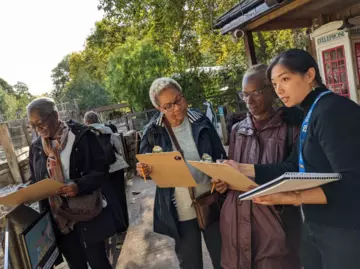
While many picture conservation scientists spending all their time in the field, Heidi’s work is just as much about people as it is about wildlife. Conservation doesn’t happen in isolation—it requires constant collaboration with policymakers, community members, and even artists to drive change that lasts.
"Fishers are often villainized, and a lot of them have not had the best interactions with conservationists. But when we recognize and respect their knowledge, we realize we’re all working toward the same goal." (Ilse Martinez)
Ilse challenges the misconception that conservationists and local fishers are at odds. She’s seen firsthand how fishers hold deep ecological knowledge about the species they rely on—knowledge that is often overlooked in conservation efforts. By bridging that gap, she’s proving that sustainable fishing and shark conservation don’t have to be opposites.
"Conservation is only successful when people feel included in the process. When communities can see the direct benefits of conservation, they take ownership of it." (Lea Moura)
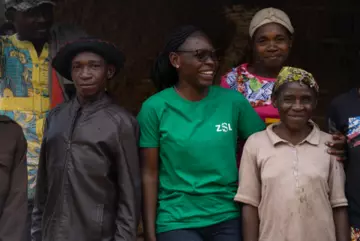
For Lea, conservation isn’t just about protecting wildlife—it’s about ensuring that the communities living alongside nature have a stake in its protection. She works to dispel the myth that conservation comes at the cost of human well-being by showing how sustainable livelihoods and conservation efforts can go hand in hand.
Creating Change Through Conservation
Ilse, Lea, and Heidi are proof that conservation isn’t just about protecting species—it’s about working with people who share their habitats. By valuing local expertise, ensuring communities have a stake in conservation, and challenging outdated approaches, they are creating real change for wildlife and people alike.
